
Filter News
Area of Research
- (-) Energy Science (50)
- (-) Isotopes (18)
- (-) Materials (19)
- Advanced Manufacturing (3)
- Biological Systems (1)
- Biology and Environment (18)
- Computational Biology (1)
- Electricity and Smart Grid (1)
- Fusion and Fission (4)
- Materials for Computing (2)
- National Security (9)
- Neutron Science (14)
- Nuclear Science and Technology (7)
- Supercomputing (12)
News Topics
- (-) 3-D Printing/Advanced Manufacturing (25)
- (-) Advanced Reactors (3)
- (-) Biomedical (8)
- (-) Clean Water (5)
- (-) Cybersecurity (6)
- (-) Energy Storage (22)
- (-) Isotopes (20)
- (-) Microelectronics (1)
- (-) Space Exploration (3)
- Artificial Intelligence (5)
- Big Data (2)
- Bioenergy (11)
- Biology (4)
- Biotechnology (1)
- Buildings (11)
- Chemical Sciences (8)
- Composites (3)
- Computer Science (13)
- Coronavirus (6)
- Environment (23)
- Exascale Computing (1)
- Fossil Energy (1)
- Fusion (2)
- Grid (13)
- High-Performance Computing (3)
- Hydropower (1)
- Machine Learning (2)
- Materials (24)
- Materials Science (20)
- Mathematics (2)
- Mercury (1)
- Microscopy (8)
- Nanotechnology (9)
- National Security (2)
- Neutron Science (11)
- Nuclear Energy (13)
- Partnerships (5)
- Physics (10)
- Polymers (4)
- Quantum Computing (1)
- Quantum Science (1)
- Security (4)
- Simulation (1)
- Summit (3)
- Transportation (19)
Media Contacts

Porter Bailey started and will end his 33-year career at ORNL in the same building: 7920 of the Radiochemical Engineering Development Center.

East Tennessee occupies a special place in nuclear history. In 1943, the world’s first continuously operating reactor began operating on land that would become ORNL.
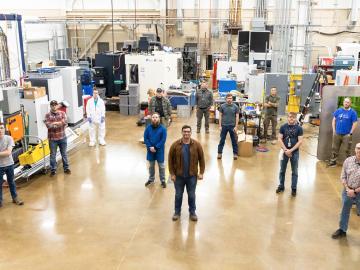
The University of Texas at San Antonio (UTSA) has formally launched the Cybersecurity Manufacturing Innovation Institute (CyManII), a $111 million public-private partnership.

When Sandra Davern looks to the future, she sees individualized isotopes sent into the body with a specific target: cancer cells.
A collaboration between the ORNL and a Florida-based medical device manufacturer has led to the addition of 500 jobs in the Miami area to support the mass production of N95 respirator masks.
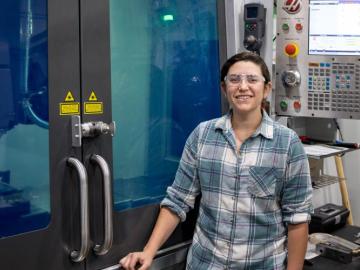
Growing up in Florida, Emma Betters was fascinated by rockets and for good reason. Any time she wanted to see a space shuttle launch from NASA’s nearby Kennedy Space Center, all she had to do was sit on her front porch.
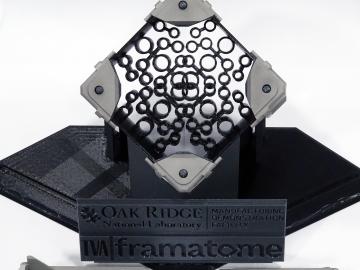
The Transformational Challenge Reactor, or TCR, a microreactor built using 3D printing and other new advanced technologies, could be operational by 2024.
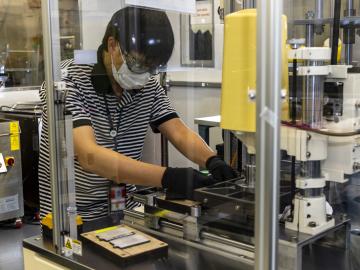
Soteria Battery Innovation Group has exclusively licensed and optioned a technology developed by Oak Ridge National Laboratory designed to eliminate thermal runaway in lithium ion batteries due to mechanical damage.
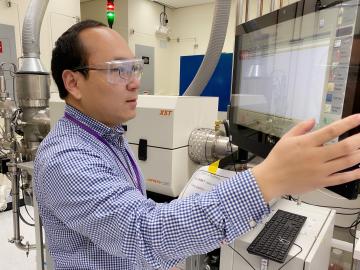
About 60 years ago, scientists discovered that a certain rare earth metal-hydrogen mixture, yttrium, could be the ideal moderator to go inside small, gas-cooled nuclear reactors.
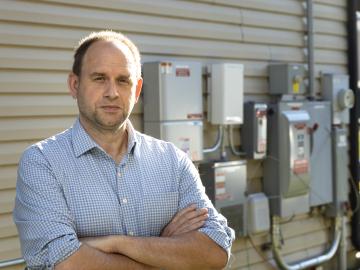
Joe Hagerman, ORNL research lead for buildings integration and controls, understands the impact building technology innovations can have during times of crisis. Over a decade ago, he found himself in the middle of one of the most devastating natural disasters of the century, Hurricane Katrina.


